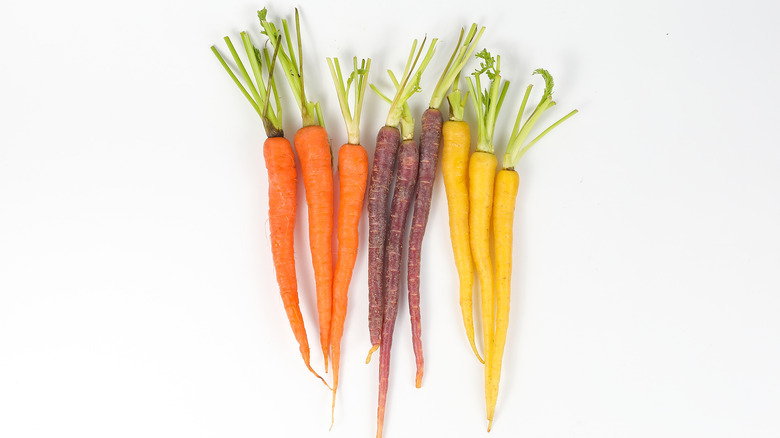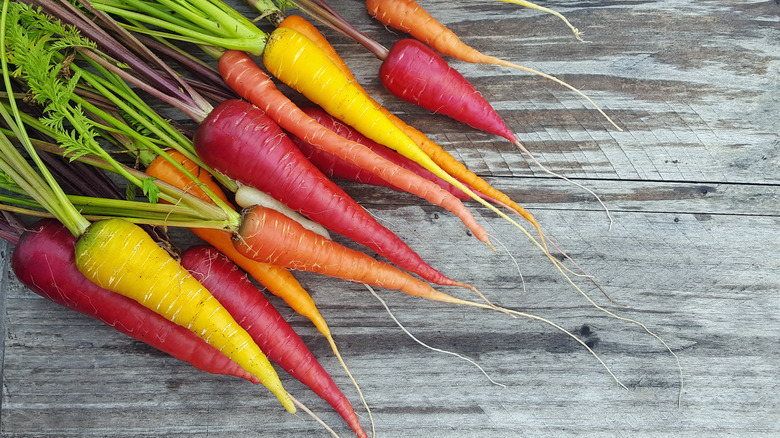What Color Can Tell You About A Carrot's Flavor
Just like purple tomatoes can exist, carrots also pop up in various colors. While you might be used to seeing the bright tangerine-hued vegetables at the supermarkets, there are a host of other colorful carrots that range from red to yellow, purple to even white. Aside from a clear difference in hue, does color also impact the flavor of a carrot?
While orange carrots have become one of the most popular varieties, this wasn't always the case. Originating in Iran and Afghanistan, The Economist shares that early farmers unintentionally grew colorful carrots (primarily purple) until they began selectively breeding them to achieve yellow, red, and eventually orange hues, which is why carrots are no longer exclusively purple. These appeared in 17th-century Netherlands, often believed to be a tribute to William of Orange, who battled for Dutch independence.
Interestingly, color has always played a huge part in our perception of taste. According to Flavour Journal, color is often the most important sensory cue used by the brain to determine food sources and make predictions about their flavor. In fact, i-Perception reports that we commonly associate pink hues with sweetness, green with sourness, white with saltiness, and black with bitterness. Likewise, observing color can also give an instant impression of freshness and quality.
Orange is sweet, purple is peppery, and red is earthy
Pigment is responsible for giving carrots their color. While color can vary based on the cultivar, Delishably explains that the intensity of pigment can also be influenced by factors like growing season, weather conditions, soil quality, rain level, and amount of sunlight received. Naturally, growing conditions can also impact flavor, leading us to the million-dollar question: What can color tell us about a carrot's taste?
Perhaps unsurprisingly, a spectrum of carrot colors also yields a spectrum of flavors. Although the differences may be subtle, there are still marked distinctions. Where orange carrots are sweet, America's Test Kitchen states that white and yellow varieties are even more honeyed with slight herby nuances, whereas purple carrots instead have a peppery profile. Red carrots taste similar to orange cultivars with a dash of earthiness.
Nutritionally, all cultivars tend to have many of the same benefits. However, certain colors may boast different levels of carotenoids or other phytonutrients. For example, Wine Country Cooking reports that orange carrots contain a lot of beta-carotene (good for vision), yellow carrots have high levels of lutein (promotes brain and eye health), purple carrots contain higher amounts of anthocyanins (for cognitive and cardiovascular health), and red carrots contain lycopene (protects against cancer). Just remember to skip the peeling to ensure the maximum concentration of nutrients.

